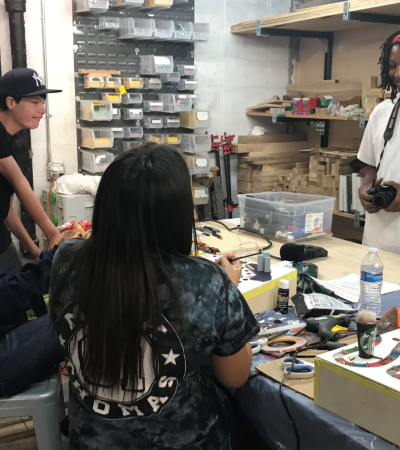For many years, public libraries required phone or walk-in program registration to regulate the number of attendees and who to expect. It was a cumbersome process with no-shows and waiting lists, but it was a routine that had yet to be evaluated.

As customer traffic grew thanks to the impact of the internet and computers in the library, and as public libraries embraced the stated philosophy of truly welcoming everyone, registration fell by the wayside in many systems.
This relieved staff and customers and worked out fine until COVID-19 hit. Pivoting back to registration was necessary due to the addition of virtual programming and the need to keep numbers small to comply with local health restrictions on gathering. Managing registration is certainly easier now with online signups and software used to manage waiting lists and send reminder notifications. However, many libraries still experience no-shows, resulting in empty seats and lower-than-expected attendance.
As society is coming out of the COVID period, registration is still in place in many library systems. But we need to ask ourselves how often registration for in-person programs is really necessary.
The barriers to registration
Program registration gives priority to customers who can wait for registration to open and then register immediately online from home with readily available internet. It also prioritizes customers with jobs and schedules that allow them to plan, which is not the reality for many. New customers who see that a program is going on and may want to join are also excluded if registration is required. Even if customers who haven’t registered are admitted as space allows, they may not feel welcome and won’t get the best seats.
Of course, registration is necessary for virtual programs so the conferencing platform link can be shared, and fire codes need to be adhered to for in-person program safety. In some cases, specific supplies need to be procured and computer stations need to be available. But in many cases, registration creates a barrier that prioritizes resourced customers and discourages new customers and those who are less able to use technology.
How can we be more flexible and have a first-come, first-served approach?
Customers like the spontaneity of walking into a program they didn’t expect. Just like discovering a book on display that sparks their interest, customers often like the serendipity of discovering a free pottery class or enjoying music that is new to them. Here are some things to think about while planning programs without registration.
- Is your meeting room or programming room too small?
Move the program to the public area of the library. This approach brings a bit more noise to the space for a while, but it’s also a way for the general public to see and hear what goes on during a program. Customers often have no idea what a story time is until they see it happening on the floor.
- Using all the space
Resist the urge to use the meeting room as storage space. Carts of books waiting to be shelved can be moved to the public floor. Maybe customers will see something they like, and the item won’t need to be reshelved after all! Are items waiting to go to the landfill? Put in that service ticket today! Ask your Friends group or library foundation to buy a locking cabinet so supplies can be stored in an area that is not used for other purposes.
- Worried about a big crowd?
Have more than one staff person in the room. The second person could be another staff member, or it could be a volunteer or intern. This person can help hand out manipulatives, settle small challenges such as the need for more chairs, and assist with basic crowd control. Basic training in classroom management could give your staff more confidence in overseeing a large group of preschoolers or customers of any age.
Add another session the night before or on the same day. The second session can be repeated so there isn’t a lot of extra work involved, but it spreads out the crowd. Give it a few weeks, or a programming cycle, so the customers can learn about the new opportunity to attend at a new time.
If your library system is still requiring registration for programs, give open access a try. Welcoming new customers and creating new opportunities and experiences will be worth it!



